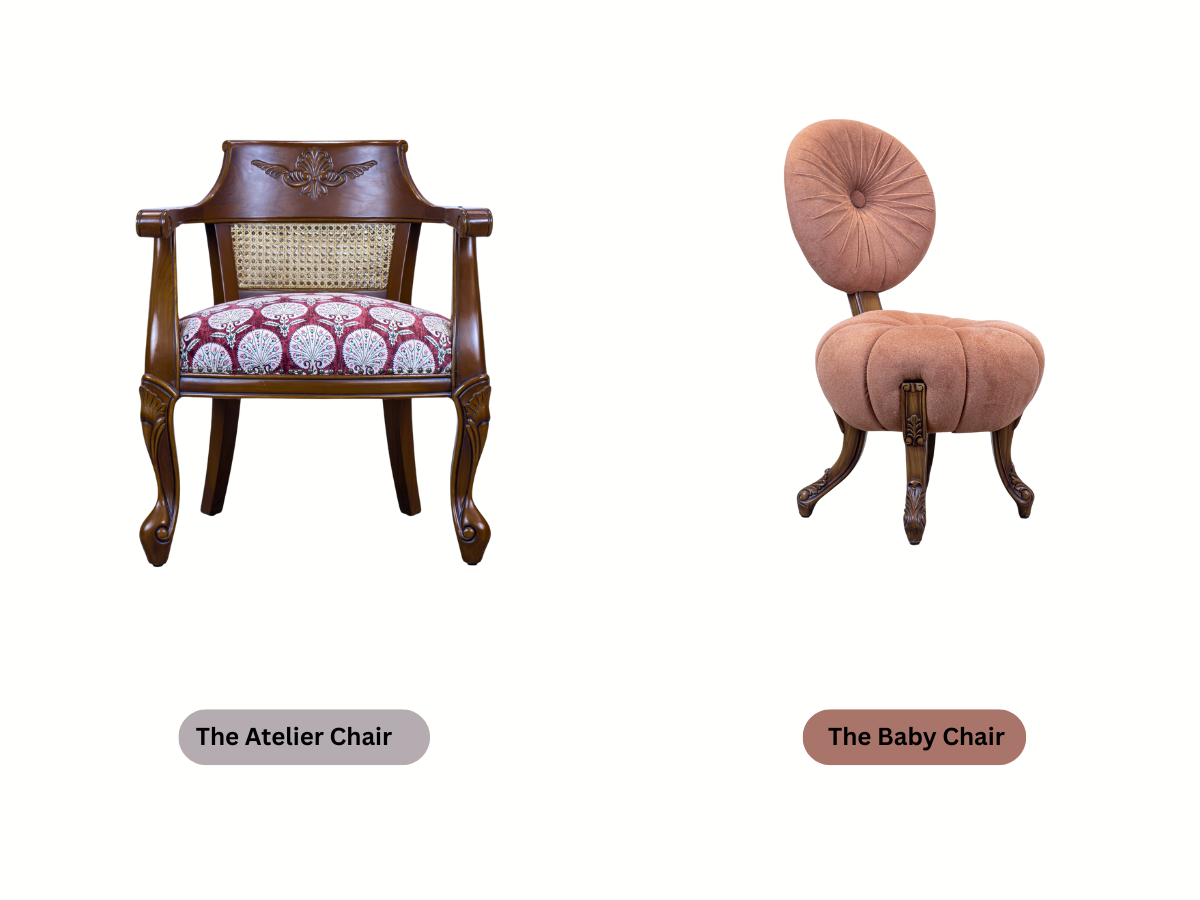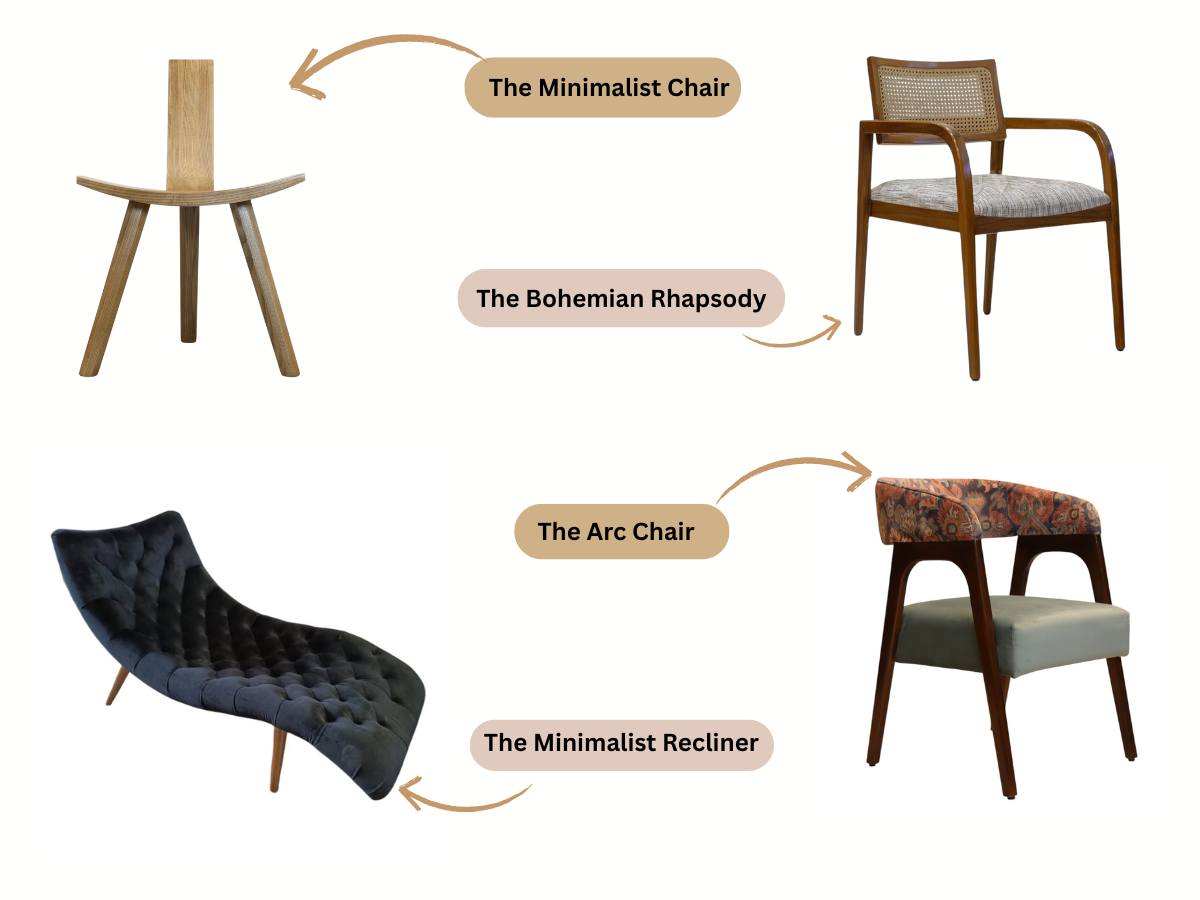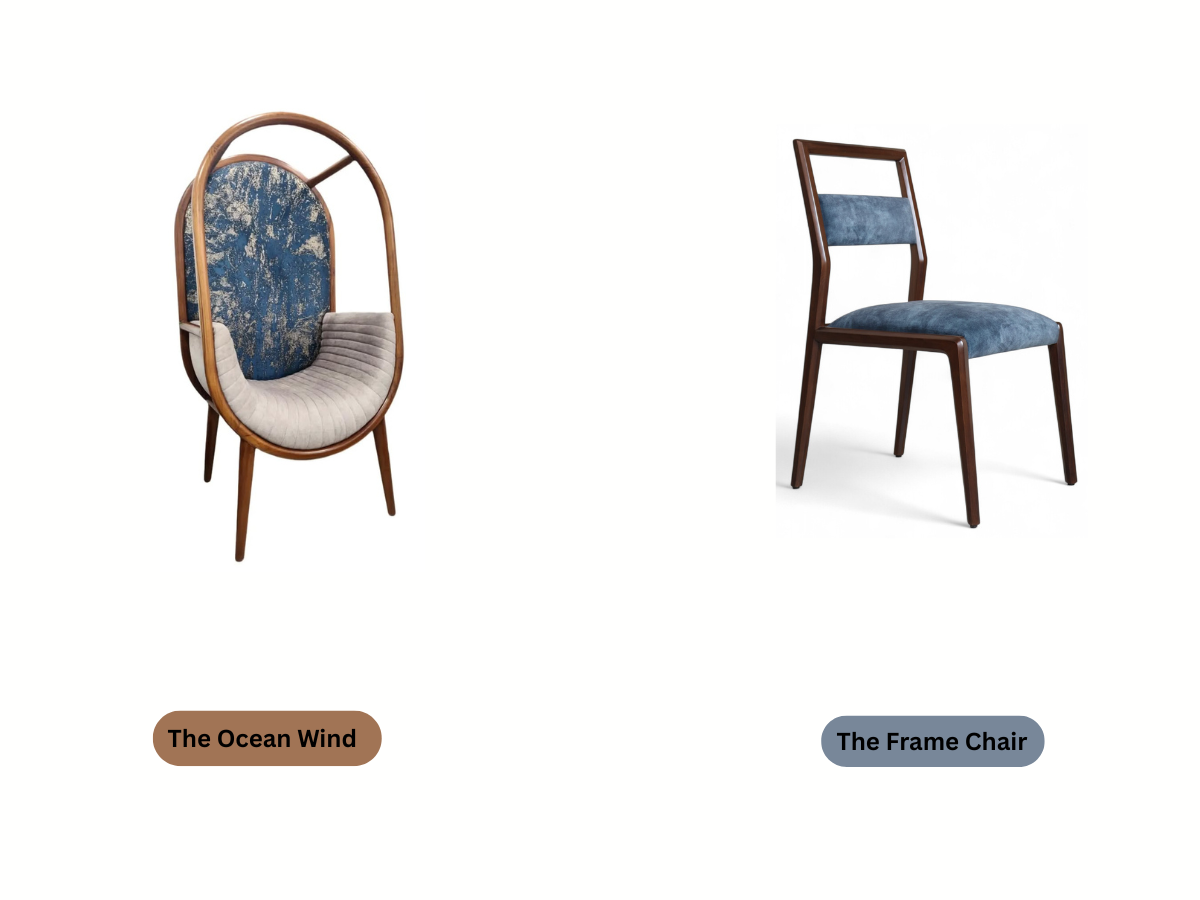Renaissance and Baroque styles
Ancient Egypt, Greece, and Rome significantly shaped early furniture with detailed carvings and distinct styles. Later, the Italian Renaissance revived these Greco-Roman ideas in their furniture design. Renaissance and Baroque designs mostly dealt in Walnut and Mahogany wood. Few of the famous styles of this period are Louis IV, Queen Anne, etc.

Neo-classical style
Neoclassical design style draws heavily from ancient Greek and Roman designs. The straight lines, symmetrical shape, and decorative elements like the carved details on the legs and back are characteristic of this style.

Art Nouveau style
Art Nouveau furniture is easily recognized by its flowing, curved lines, often called "whiplash" curves. Because Art Nouveau broke away from old furniture-making rules, designers could try new materials like glass and wrought iron, leading to unique and original pieces.

Modern style
Across the landscape of modern furniture design, a number of compelling themes in chair creation have captured the imagination of designers and are frequently employed in their latest works. Most popular of them are listed below.

Let’s look into some key points to consider before deciding on a chair style to bring into your space:
- Purpose and Placement: Where the chair will be placed? Is it for lounging in the living room, for dining purpose, working in a home office, or adding a stylish accent to a bedroom? The intended use and location will heavily influence the most suitable style and material. For dining areas you might consider chairs that have a wood at the top of backrest, so as to keep the fabric safe from stained hands.
- Comfort Requirements: How long will the chair be used? For quick sits or long, leisurely lounging? Consider factors like seat depth, cushion requirements, back height and support, armrest presence and height, and cushioning. A high back chair may look very impressive in drawing room area but it may obstruct serving in the dining area.
- Interior Décor and Style: Does the chair need to seamlessly blend with your current aesthetic or act as a contrasting statement piece? Consider the overall style of your room (e.g., modern, traditional, bohemian), the color palette, and existing furniture.
- Material Preferences and Durability: Consider factors like durability (especially important for high-traffic areas or households with kids and pets), ease of cleaning, texture, and visual appeal (e.g., leather, fabric, wood, metal, rattan) and microclimate of the area where you are going to place the chair.
- Budget: How much are you willing to invest in this chair? Different styles and materials come with varying price points. Having a budget in mind will help narrow down your options.
- Longevity and Timelessness: Do you prefer a trendy piece or something with a more classic and enduring appeal? Consider how the style might age over time and whether it will continue to fit your evolving tastes.
- Sustainability and Ethical Considerations: If these factors are important to you, research the materials and manufacturing processes of the chair. Look for sustainable materials and ethical production practices.
Ultimately, the perfect lounge chair transcends mere functionality. It becomes a nucleus, a statement piece that reflects your individual taste and enhances the ambiance of your living space. By understanding and embracing these top lounge chair styles, you can curate a collection that not only offers unparalleled comfort but also tells the unique story of your home and personal style. So

explore these designs, discover what resonates with you, and invest in lounge chairs that truly elevate your everyday living experience.



